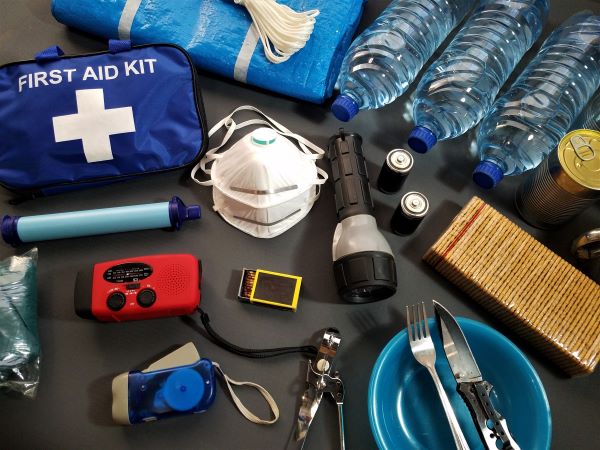Hitting the trail with just a very few essentials that you need is the adventure of hiking and camping. You must know or determine how far you’re planning to hike, what the weather forecast has in store for you, and how remote the location is – all of these will help you think of what essential things you need to put in your backpack. Why? Because the colder the weather and the more remote the hike is, the more food, water, and clothing you need.
Here are the things you need in your backpack before you even hit the road for a hike. We’ve listed it down to help you pack.
1. FIRST AID
Take note that the number of people involved and your trip’s length will affect what’s in your First Aid kit. It should include adhesive tape, pain medication, adhesive bandages of various sizes, blister patches, nitrile gloves, gauze pads, pen, paper, and disinfecting ointment.
Carrying a compact guide for dealing with medical emergencies is also a great idea.
2. SHELTER
It’s important to understand that your tent is the only emergency shelter that you have with you at all times. Emergency shelter is vital to have in your backpack. In case you get injured or stranded, it will protect you from the rain and wind. Also, include a bivy sack, an emergency space blanket, a plastic trash bag, and an ultralight tarp.
3. NAVIGATION
You surely need modern navigation tools if you’re planning on hiking or camping in a remote area.
Satellite messenger and PLB (Personal Locator Beacon) are used to alert emergency personnel if you need help. They work in remote places even without a signal and when your phone is useless.
GPS devices will let you accurately find your location on a digital map. Most of these devices are weatherproof and rugged for specifically outdoor traveling.
A geographic map or a topographic map will help you and guide you on any trip, and you don’t have to worry about technology failing. Also, an altimeter watch will allow you to determine an approximate of your elevation. It has a barometric sensor to provide GPS data and to measure air pressure. Don’t forget a compass in the case you become disoriented in the backcountry. It goes along well with good map-reading knowledge.
4. SUN PROTECTION
Sunscreen, sun protection clothing, and sunglasses are a must on your packing list. Always wear it to protect yourself, or it could result in potentially premature skin aging, cataracts in the long term, snow blindness, sunburn, and skin cancer. It’s recommended to apply SPF 30 for extended outdoor activities. And of course, sun protection clothing is the most effective way to block UV rays. To learn more about sun protection clothing, check this website.
5. FIRE
When starting and maintaining a fire, you need to have reliable supplies. This is important in case there is an emergency. When your trip is in a snowy place or above treeline, where firewood is not available, a travel stove is recommended since it can represent a source for potable water and emergency heat. Make sure to put the matches on a waterproof container or to take waterproof matches.
6. HEADLAMP
When venturing out in the dark woods or the night, you’ll need a light source. Keeping your hands free for all types of tasks is one of the few reasons why a headlamp is preferable for most travelers and hikers. Also, don’t forget to carry extra batteries with you just in case of an emergency.
7. KNIFE
Every adult in your group should carry a knife. We all know that knives are convenient for emergency needs, food preparation, kindle a fire, first aid, and many other things making it an essential item. Along with it, you should have a small gear repair kit, which should include cordage, fabric repair tape, zip ties, duct tape, tent poles, crampons, stove sleeping pad, repair parts for your water filter if you have one, and safety pins. Remember, the more remote you are, the more critical your kit becomes.

As years pass by, rather than just listing essential individual items, it evolves into a system. The list of essential things could go on and on, but it really just comes down to this system:
- First aid: which should include the basics to treat a wound.
- Shelter: A tent or a light emergency bivy.
- Navigation: Satellite messenger, map, PLB, altimeter, compass, and GPS Device
- Sun Protection: sunscreen, sunglasses, and sun-protective clothes
- Fire: stove and tinder, lighter, matches
- Headlamp: with extra batteries
- Extra Food: Beyond the minimum expectation
- Knife: and gear repair kit
- Clothes: add extra clothes in case of an emergency
- Water: always carry extra water with you.
